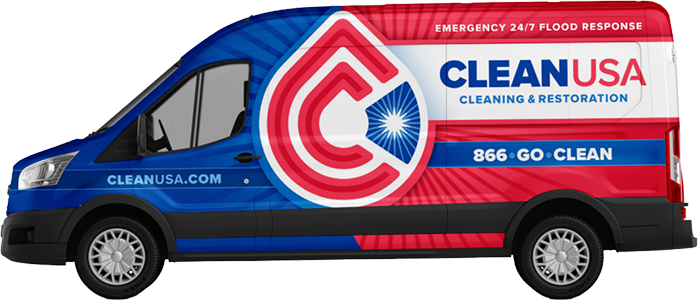Water damage can be devastating for any homeowner, and it’s important to understand the different categories of water damage to properly address and prevent further damage. There are three categories of water damage, each with varying levels of severity and potential health risks.
Key Takeaways:
- Water damage can be classified into three categories
- Category 1 water damage is the least severe and involves clean water
- Category 2 water damage is more contaminated and can cause illness if ingested
- Category 3 water damage is the most severe and poses serious health risks
Category 1 Water Damage: Clean Water Damage
Category 1 water damage is the least severe and involves clean water from sources such as broken pipes, leaking faucets, and overflowing toilets without any fecal matter. Since the water is from a clean source, it poses minimal health risks. However, it’s important to note that Category 1 water damage can quickly escalate to more severe categories if left unattended.
If you experience Category 1 water damage, it’s crucial to address the problem as soon as possible to prevent further damage. This involves stopping the source of the water, drying out the affected areas, and disinfecting any contaminated surfaces to prevent mold growth.
While you may be able to handle a small Category 1 water damage yourself, larger and more complex jobs may require the assistance of a professional water damage restoration company. They have the expertise and equipment needed to properly dry and sanitize the affected areas, ensuring that the risk of mold growth is minimized and your home is restored to its pre-damage state.
Category 2 Water Damage: Grey Water Damage
Category 2 water damage is more contaminated and can cause illness if ingested. It includes water from appliances like dishwashers and washing machines. This type of water damage, also known as grey water damage, can contain chemicals, bacteria, and other harmful substances. Grey water may also result from flooding or leaks from sources like HVAC systems, toilets, and sinks.
Although less severe than Category 3 water damage, grey water damage still poses health risks and should be avoided as much as possible. If you suspect that your home or property has been affected by grey water damage, it’s important to take immediate action to prevent further contamination and health hazards.
Category 3 Water Damage: Black Water Damage
Category 3 water damage is the most severe and includes sewage, flood waters, and contaminated natural water. It poses serious health risks and requires immediate professional attention. The water may contain harmful bacteria and pathogens, posing a significant risk to your health if ingested or even touched. Sewage can contain hazardous chemicals and fecal matter, which can cause severe illness or even death.
If you experience Category 3 water damage, you should immediately seek professional assistance. Professionals have the necessary equipment and expertise to handle the situation safely and effectively. They can sanitize affected areas, remove contaminated materials, and prevent further damage to your property.
Identifying and Responding to Water Damage
Identifying and responding to water damage is crucial for maintaining a safe and healthy home environment. The water damage category system is a useful tool for assessing the severity of water damage in your home. There are three different levels of water damage, each with its unique characteristics and potential risks to your health and property.
Water Damage Levels
Water damage levels are classified into three categories based on the level of contamination in the water. Category 1 water damage is the least severe and involves clean water from sources such as broken pipes. Category 2 water damage is more contaminated and can cause illness if ingested. It includes water from appliances like dishwashers and washing machines. Category 3 water damage is the most severe and includes sewage, flood waters, and contaminated natural water. It poses serious health risks and requires immediate professional attention.
Water Damage Category System
The water damage category system is a useful tool for assessing the severity of water damage in your home. Understanding the different categories of water damage can help determine the appropriate course of action for addressing the damage. It is crucial to identify the category of water damage in your home as soon as possible to minimize further damage and prevent potential health risks.
Effective Home Maintenance
Effective home maintenance can help prevent water damage in your home. Regularly inspecting your plumbing and appliances for leaks, waterproofing potential problem areas, and cleaning gutters and downspouts can help reduce the risk of water damage. If you do experience water damage, it is essential to take immediate action to minimize further damage, including turning off the water source and contacting a professional water damage restoration company.
Professional Water Damage Restoration
When dealing with Category 2 or Category 3 water damage, it is essential to seek immediate professional attention for effective restoration. Attempting to address the damage on your own can lead to further complications and health risks. Professional water damage restoration companies have the experience, knowledge, and equipment to identify the type and severity of water damage accurately and take appropriate action to restore your home to its pre-damage condition.
Immediate professional attention is crucial in the case of Category 2 and Category 3 water damage because of the potential health risks involved. Exposure to contaminated water can cause severe illness or even death. Professionals will also work to prevent mold growth and structural damage that can affect the value and safety of your home in the long term.
Professional restoration companies like Clean USA follow a set process according to the water damage class, using specialized equipment like industrial fans, dehumidifiers, and air scrubbers to dry and sanitize your home. They’ll also work with your insurance company to ensure your claim is processed expediently and efficiently to minimize your out-of-pocket expenses.
Conclusion
Understanding the three categories of water damage is essential for homeowners to effectively identify, respond to, and address any water damage incidents. Category 1 water damage involves clean water from sources such as broken pipes and is the least severe, while Category 2 water damage is more contaminated and can cause illness if ingested. This category includes water from appliances like dishwashers and washing machines. Category 3 water damage is the most severe and includes sewage, flood waters, and contaminated natural water. It poses serious health risks and requires immediate professional attention.
By identifying the category of water damage, homeowners can take the necessary steps to effectively respond to and address any incidents. For clean water damage (Category 1), immediate attention and effective home maintenance can prevent the situation from escalating. However, for more severe water damage categories (Category 2 and Category 3), seeking professional assistance is crucial and can prevent further damage to your home and potential health risks.
Overall, understanding the different categories of water damage is crucial for homeowners to protect their homes and families. By taking the appropriate steps and seeking professional assistance when necessary, you can effectively address any water damage incidents and maintain a safe and healthy home.
FAQ
Q: What are the three categories of water damage?
A: The three categories of water damage are clean water damage (Category 1), grey water damage (Category 2), and black water damage (Category 3).
Q: What is Category 1 water damage?
A: Category 1 water damage is the least severe and involves clean water from sources such as broken pipes.
Q: What is Category 2 water damage?
A: Category 2 water damage is more contaminated and can cause illness if ingested. It includes water from appliances like dishwashers and washing machines.
Q: What is Category 3 water damage?
A: Category 3 water damage is the most severe and includes sewage, flood waters, and contaminated natural water. It poses serious health risks and requires immediate professional attention.




